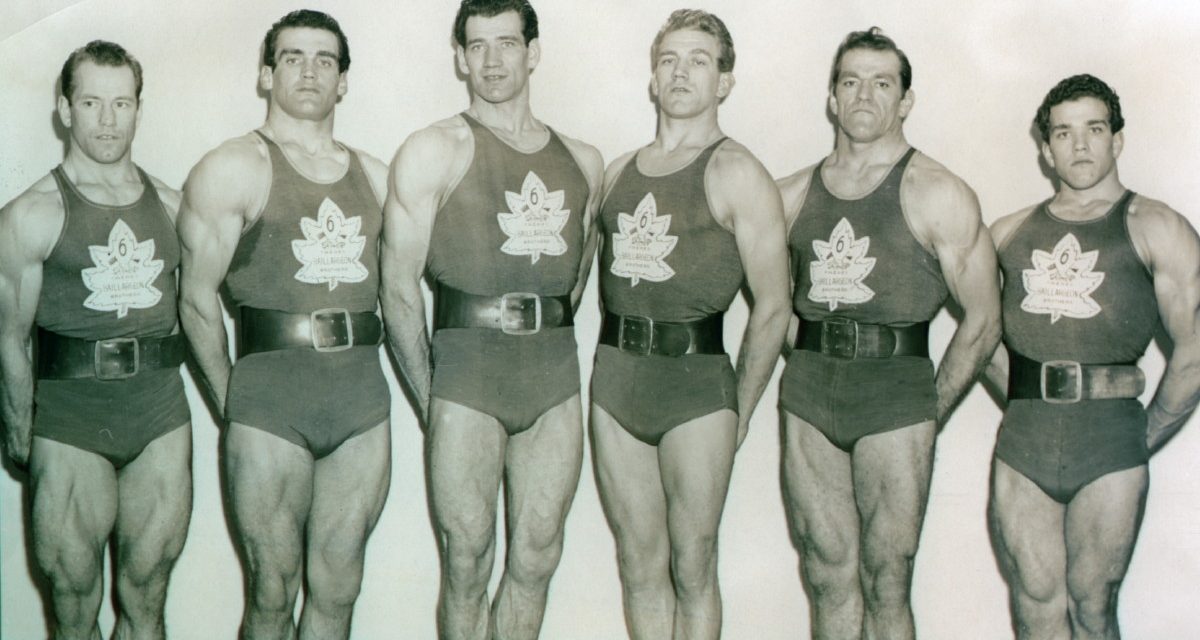In recent months, Quebec City’s rich wrestling history suffered a double loss. First, long-time promoter, Dick Marshall, died at the rich age of 93. Then Le Colisée Pepsi, the city’s arena since 1949, closed its doors.
Marshall died in his sleep on August 25, 2015, after a long battle with serious heart issues. He was believed to be the oldest living wrestler until his death.
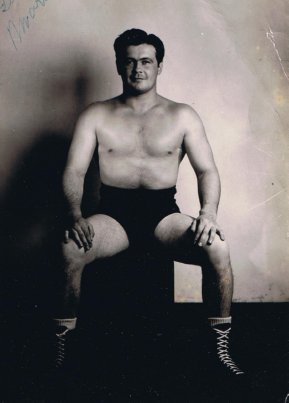
Dick Marshall. Courtesy the Jim Morneau Collection
But he wasn’t actually Dick Marshall. He was born c on November 10, 1921, and began his amateur wrestling training as a teenager, alongside his friend Georges Cagney. He started as a professional in the early 1940s, but his stature — 5 foot 8 and 160 pounds — kept him from being a main player in his era. He would become better known in 1971 when he started promoting in Quebec City, which he did for more than 15 years. He was so involved and known in the community that even his obituary listed Dick Marshall alongside his real name.
* * *
For as long as there was pro wrestling in Montreal, there was pro wrestling in Quebec City as well, which is, historically speaking, the province of Quebec’s second biggest market. All the great stars of the pioneers’ era, like Frank Gotch, Eugène Tremblay, Jean-Baptiste Paradis, Ed “Strangler” Lewis, and Stanislaus Zbyzsko all wrestled in Quebec City as part of the loop that promoter George Kennedy organized.
In the early 20th century, the matches were held at various venues.
One of them was the Quebec Skating Rink, home of the Quebec Bulldogs. Lead by Quebec City’s own Joe Malone, team’s captain and Hall of Famer, the hockey team won two Stanley Cups at home in 1912 and 1913. After the last championship, a new home for the squad was built at Victoria Park. The new venue, simply called Quebec Arena, started presenting wrestling on May 9, 1914, with a main event that pit Frenchman Raoul de Rouen against French-Canadian Raymond Cazeaux.
Another venue wrestling promoters were using was the Auditorium. Although it’s not a wrestling venue any longer, it still exists. The Capitol, as it is now called, presents many concerts and music shows. On October 29, 1918, the Skating Rink was ruined in a fire. As history will show, this was a recurring theme for Quebec City’s arenas.
* * *
The 1920s weren’t good years for pro wrestling in the province up until the arrival of Frenchman Henri Deglane at the end of the decade. In the early 1930s, the likes of Deglane, Ed Don George and Félix Miquet, to name a few, wrestled in Quebec City at the Arena.
For most fans there was only one Coliseum in Quebec City, but the reality is different. Bad luck struck again in June 1942 when the Quebec Arena was destroyed by yet another fire. Left without a big arena, the decision was made to build an indoor rink within the walls of the already-existing Agriculture Pavilion. Shortly after its completion, the venue would be known as the Coliseum and would be used for wrestling as well. The new venue could hold 4,500 fans, about a third of what the Montreal Forum held at the time. But even though it was the biggest arena in town at the time, the Coliseum was not the main wrestling venue in Quebec City.
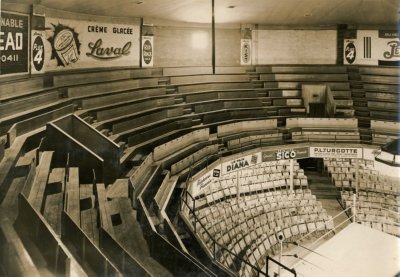
La Tour. Photo courtesy Jean Ste-Marie
Since 1936, a 3,000-seat venue called La Tour was synonymous with pro wrestling. It was a former fuel storage tank turned into a theatre in the St-Roch neighbourhood. Promoted by the Champlain Athletic Club, which also promoted the Coliseum, the venue welcomed the likes of Yvon Robert, Larry Moquin, and all the other stars who came into the territory long enough to work the loop.
In the late 1930s, La Tour was used as often as twice a week, usually with the heavyweights on Mondays and the lightweights on Fridays. The main people working for the Champlain Club were promoter Ernest Lanthier and manager Roland Ste-Marie. From time to time, another promoter would promote a show there as well.
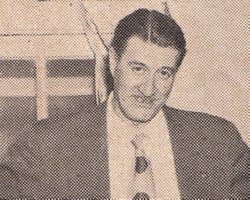
Rolland Ste-Marie. Photo by Tony Lanza
In the long run, Ste-Marie would become the main promoter in town. Born in Longueuil, on July 11, 1904, Ste-Marie started promoting wrestling in Loretteville with Lanthier in 1931. Then in 1933, the duo made their debut in Quebec City, promoting at the Old Coliseum. A former amateur boxer, Ste-Marie also promoted boxing at La Tour and was involved in the establishment of junior hockey in Quebec City.
Fans who lived in the era were thrilled by the matches between Yvon Robert and local star Paul Baillargeon, the first one held at La Tour.
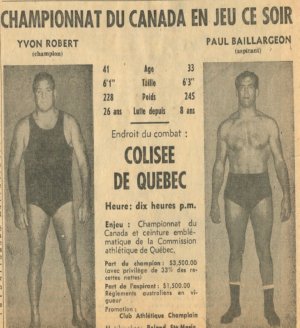
Baillargeon was part of a staple of strongmen and pro wrestlers — his brothers. Born in St-Magloire, a small town 70 miles south-east of Quebec City, Paul, Adrien, Lionel, Charles, Jean and Tony Baillargeon were considered the strongest brothers in the world. Following in the footsteps of earlier strongmen Louis Cyr and Victor Delamarre, the Baillargeons travelled as a unit on shows to showcase their strength. But like Cyr, Delamarre and many other strongmen, they embarked into pro wrestling as well. Paul was considered the best talent while Antoine (Tony) had the longest career.
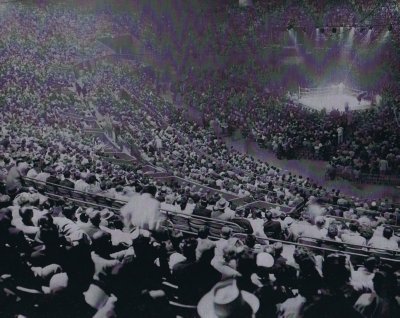
Le Colisee is set for Baillargeon vs Robert. Courtesy the Paul Leduc Collection
As much as Yvon Robert was liked in Montreal and in the province of Quebec in general, when he faced Paul Baillargeon at La Tour in 1956, he had to play subtle heel because the crowd was behind the local star. From Paul Lortie to Killer Kowalski to Buddy Rogers, Baillargeon wrestled them all in Quebec City. After his career was over, he was used by Eddie Quinn as the local promoter.
In the meantime, Dick Marshall, who also performed under the name of King Kong Marshall, was wrestling around the province, including Montreal. His small build made him the perfect fit for what was called “La p’tite Lutte” (lightweight wrestling), a category of wrestlers not big enough to perform at the Forum and normally under 200 pounds. In 1948, at St-Jacques Market in Montreal, Marshall wrestled Jack Britton. Little did anyone know that the two of them would become two of the most prolific wrestling promoters in Quebec’s wrestling history. In fact, Britton would start promoting midget wrestling the following year.
* * *
Quebec City, like Montreal, had its own local lightweight stars.
Kid Hecker was known for his dropkick, Paul Néron was a very good heel who main-evented a lot of lightweight shows, Maurice Bertrand, and Maurice Gosselin were all between 26 and 31 years of age and amongst the most popular wrestlers in the heyday of the lightweight division in Quebec City. They all traveled to Montreal as well and in other small towns around the province, working the lightweight shows of the time, but they were all born and based out of Quebec City.
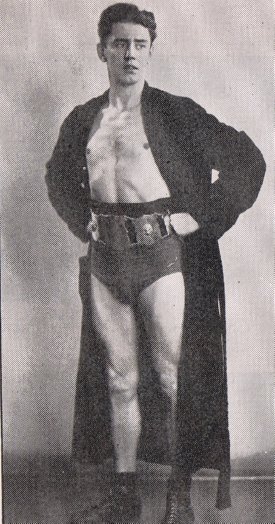
Kid Hecker. Photo by Tony Lanza
That being said, arguably one of the biggest names coming from Quebec City at the time was Juan Lopez. Born Hector Morin, he started wrestling in the late 1930s. Billed as a Mexican, he was one of the first Quebec wrestlers to ever wrestle in Mexico, around the same time countryman Raymond Couture did. But he passed most of his career wrestling mainly in Quebec City and around town, although he did work in Montreal and in Ontario as well. He had a long-lasting career, used on a regular basis by Johnny Rougeau’s promotion in the mid- and late-1960s and then by Grand Prix in the early 1970s.
* * *
The late 1930s and early ’40s marked much change in the province. In August 1939, Eddie Quinn arrived in Montreal from Boston and altered the landscape of pro wrestling in the province alongside his star Yvon Robert. The first show he promoted in Quebec City was on February 19, 1940, at La Tour, using Robert in the main event against Tom Casey.
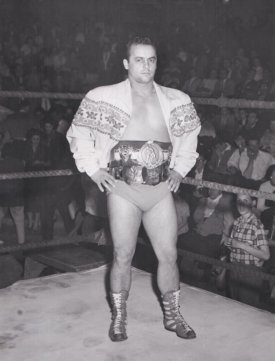
Juan Lopez. Photo by Tony Lanza
Almost a decade later, in March 1949, for the third time in a span of 30 years, an arena in Quebec City burned, leaving nothing behind. This time it was the Coliseum. But under the mayor’s instructions, a new Coliseum, built on reinforced concrete to prevent a fire, got under construction in May of the same year, and only six months later, in December, it opened, doubling its capacity, with 10,000 seats and a large standing room area. It’s that Coliseum that closed its doors for good on Monday, September 14, 2015.
* * *
Until Eddie Quinn stopped promoting in 1963, Quebec City was always part of the loop, usually on Fridays, at a time when wrestling in Montreal was held on Wednesdays. It went back to Mondays at the beginning of the 1960s, but wrestling was at a low point by then. Television started in September 1952 and Quinn’s first TV show was in January 1953. But that was just for the Montreal market. On July 17, 1954, CFCM-TV was the first to broadcast outside of Montreal. The French CBC station was CBFT. From that point, Quebec City had live wrestling on Fridays and aired wrestling on TV on Wednesdays.
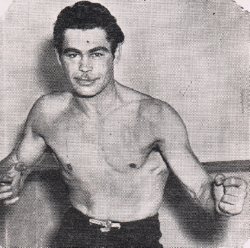
Maurice Gosselin. Photo by Tony Lanza
Since there was no television in Quebec City before that, wrestling was not the main draw in the Coliseum in the early 1950s. A young hockey player by the name of Jean Béliveau was the local star. He actually played in the first hockey game held in the new Coliseum on December 8, 1949, suiting up for the Quebec Citadelles and dominating the Quebec Junior Hockey League. In 1951, playing at home in a Memorial Cup tournament match, Béliveau and his team drew a smashing 16,806 fans, a record at the Coliseum that would last for 20 years. In a shocking turn of events, after his junior years, Béliveau decided to sign with the Quebec Aces of the Quebec Senior Hockey League, instead of the Montreal Canadiens, since he was getting paid more than Gordie Howe and Maurice Richard. He even won the Alexander Cup, the Stanley Cup of senior hockey, in front of his fans in 1952. For the 1953-54 season, he finally signed with the Habs. The Coliseum was nicknamed “The House that Béliveau Built” but in reality, he just packed the place and was not the reason it was built.
* * *
The Coliseum was a big hockey venue and therefore, a more expensive one to rent. So throughout the 1950s Quinn and Ste-Marie were using La Tour every Friday night, drawing up to 3,000 fans for the bigger shows. On April 13, 1956, Yvon Robert won the Montreal Athletic Commission title there against Killer Kowalski in front of a jam-packed house — the only title change held in Quebec City during the Quinn era.
On July 6, a rematch from La Tour between Robert and Baillargeon was changed from the latter venue to the Coliseum and rightfully so. The match drew 11,000 fans, the biggest wrestling attendance in Quebec City history at the time. It is also believed to be the first wrestling bout to be held at the Coliseum. A few weeks later, a third match between Robert and Baillargeon was booked at the Coliseum, and it was also billed as the 25th anniversary show of Roland Ste-Marie’s involvement in professional wrestling. The crowd responded well with 12,000 fans attending the event, the biggest show to date in Quebec City. If that wasn’t enough, they saw their hero, Baillargeon, win against Robert to gain the Canadian title, a secondary title not to be mistaken with the main title defended in the territory at the time.
The year 1956 also marked the pro wrestling debut of Robert “Bob” Bédard’s at La Tour against Gérard Dugas. The Quebec City-native didn’t wrestle much in his hometown and struggled to make a living until Mad Dog Vachon sent him to Minneapolis, where he became Rene Goulet and had a lengthy career that brought him all over the world. After his in-ring career was over, he worked as an agent for the WWF before retiring for good in 1997.

The 1957 tag team tournament. Courtesy L’Action Catholique, BANQ archives
In September 1957, a tag team tournament was set up at La Tour which would lead to the final at the Coliseum.
On September 6, Kowalski and Dick the Bruiser beat the team of André Bollet and Paul Baillargeon. Two weeks later, Édouard Carpentier and Bollet defeated Larry Moquin and Yvon Robert. That led to the September 27 show at the Coliseum, with a main event of Carpentier and Bollet, two Frenchmen who connected with the crowd, against Kowalski and Bruiser, who were both as mean and nasty as one could be. The match was billed for the NWA tag team championship, but in reality, that was just a gimmick since Quinn had bad blood with the Alliance over Carpentier’s NWA World title reign and had temporarily left the group.
The show also had Yvon Robert against Tarzan Zorra, Bobby Managoff versus Manuel Cortez, Killer Christie versus Larry Moquin and Frank Valois against Bob Langevin. Note it was a big heavyweight card, but without any Quebec City wrestlers. Nevertheless, the card drew 8,000 fans.
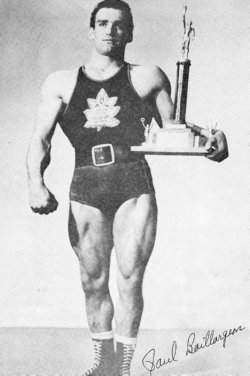
Paul Baillargeon. Photo by Tony Lanza
From that point, the Coliseum was used more and more; for the rest of the decade, it was the primary venue for Ste-Marie on Friday nights. In the summer of 1959, because the Bolshoi Ballet was using the Forum on a Wednesday night, Quinn tried something different. On June 17, instead of taping the one-hour live program from the Forum, he did it from the Quebec City Coliseum. In front of 5,000 fans, the main event was Killer Kowalski and Paul Baillargeon to a curfew draw. Quinn also brought special guests — wrestling icon Yvon Robert and hockey icon Maurice “Rocket” Richard were the referees for a tag team match. Interestingly enough, at the time, Richard wasn’t as popular in Quebec City as in the rest of the province, because of an old rivalry with Quebec City hockey fans. The third one, for the main event, was local former wrestler-turned-referee Georges Cagney.
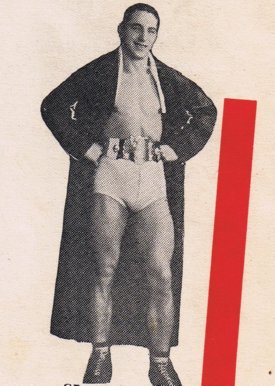
Georges Cagney. Photo by Tony Lanza
Cagney is without a doubt one of the most well-known names in the history of wrestling in Quebec City.
Like his buddy Marshall, he started wrestling at an early age. Born Gérard Letarte in Quebec City in 1919, he wrestled amateur in 1934 and was both the Quebec City and Montreal champion in the 160-pound division. He started as a pro in 1940 but had a big accident in 1941 when he fell of a 55-foot scaffold. He came back in 1944 and his career really took off. He wrestled in Quebec City, Montreal, Ottawa and even for Larry Kasaboski in northern Ontario. Mostly wrestling between 198 and 215 pounds, he was also doing some preliminary matches for Quinn at the Forum. He won many local lightweight and light-heayweight titles during that time and worked with a number of bigger names such as Eddie Auger, Bob Langevin and Sandor Kovacs. In 1951, he was known enough in Quebec City to attempt promoting, working with the Lortie Brothers’ Montreal office. But after a few shows the experience was over and Cagney was back to being a wrestler. By the early 1960s, now in his forties, he started as a full-time referee in Quebec City, and became head referee in the Grand Prix days, which was a position he kept until he retired.
* * *
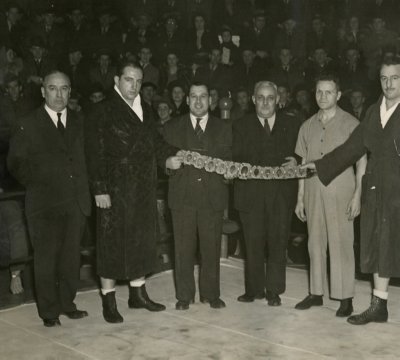
Georges Cagney is ready to face off with Paul Lortie. Photo courtesy Jean Ste-Marie
After Quinn stopped promoting, there were some dark years for wrestling in the province and it wasn’t until Johnny Rougeau started his own promotion in 1965 and got a TV deal the following year that business started to pick up again. The same pattern was used in the sense that the main promotion’s office was in Montreal and that promotion would use local representatives in pretty much every town they’d go. But instead of having all of his weekly shows at the Montreal Forum like Quinn did, Rougeau ran the Paul-Sauvé Centre once a week, was taping his shows for television on Tuesdays in Chicoutimi and the Montreal Forum was only used for big shows, usually once a month.
When he started to run house shows around the province, Rougeau took Allen Mitchell as his local promoter in Quebec City. Mitchell had started a few years earlier, replacing an ailing Ste-Marie. Mitchell’s first show was for Quinn, on August 20, 1962, and featured a main event between Johnny Rougeau and Killer Kowalski, which drew 5,000 fans, a good crowd for that time period.
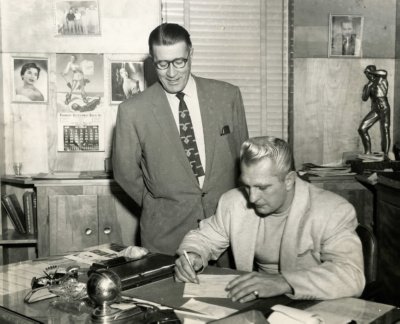
Rolland Ste-Marie and Buddy Rogers. Photo courtesy Jean Ste-Marie
As a sign of times in June 1952, promoter Lucien Gregoire brought Buddy Rogers in, on a card with barely any local guys, and only drew 600 fans at what was called the Old Coliseum, because it was on the same site as the one that burned in 1949.
Because the big boom that TV created in 1954 was over, wrestling in Quebec City was only every other week in the early 1960s, until Rougeau’s promotion, All Star Wrestling (Les As de la Lutte in French) and its flagship program called On the Mat (Sur le Matlas), started in 1965 and 1966 respectively. On October 5, 1964, a benefit show promoted by Mitchell, aiming at financially helping Ste-Marie who was very ill by then, only drew 886 fans. Ste-Marie died February 18, 1965.
The timing for Rougeau’s promotion couldn’t have been better.
But even if the crowds got better with Rougeau, it was still not reaching the heights that Ste-Marie and Quinn did when they used the Coliseum — and leagues away from the numbers hockey was drawing. Mitchell was said to not be aggressive enough. For example, instead of using the big arena, he’d use smaller venues like La Tour and the Old Coliseum. Granted, wrestling was back on TV, attendance were very good in Montreal, the company was able to tour the province, so perhaps there was no need to use the Coliseum since no other promoter was going to use it if not him. What Mitchell and Rougeau didn’t know is that only five years later, they would have high level competition, something neither Quinn nor Kennedy never had in their heydays.
* * *
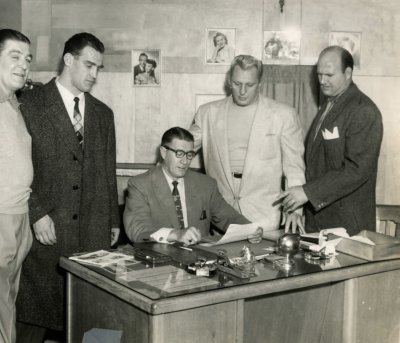
From left, Yvon Robert, Killer Kowalski, Rolland Ste-Marie, Buddy Rogers, and an unknown man. Photo courtesy Jean Ste-Marie
Grand Prix Wrestling took the scene by storm in June 1971. Begun initially by Yvon Robert because he had a personal vendetta with his former protégé Johnny Rougeau, Grand Prix would be run by wrestlers Carpentier, Maurice and Paul Vachon, and Yvon Robert Jr., promoter Lucien Grégoire, and lawyer Michel Awada.
Since Grand Prix couldn’t run in Montreal at the time, using the Verdun Auditorium once a week, it used Quebec City as its primary town and tried to make it work there. To do so, the group chose Dick Marshall to be the local promoter.
Marshall had continued to wrestle on and off until the 1950s. But although he wrestled for a number of years, he wasn’t among the elite, part of it was because of his size.
“It wasn’t really his fault. He was a perfectionist,” remembered former wrestler Paul Leduc. “He was working on his technique too much and therefore, wasn’t working his crowd enough.”
Now 50 years old, and having stopped wrestling for a little while, Marshall was a train engineer for Canadian National, a job he had and kept until his retirement — even when he was wrestling or promoting. But he was good at public relations and could help create a buzz around the new promotion.
“He was extremely friendly,” added Leduc.
Little did anyone know, 18 months later, the promotion would be number one in the province and Quebec City would be a bigger wrestling town than Montreal, thanks, in part, to Dick Marshall.
END PART 1
